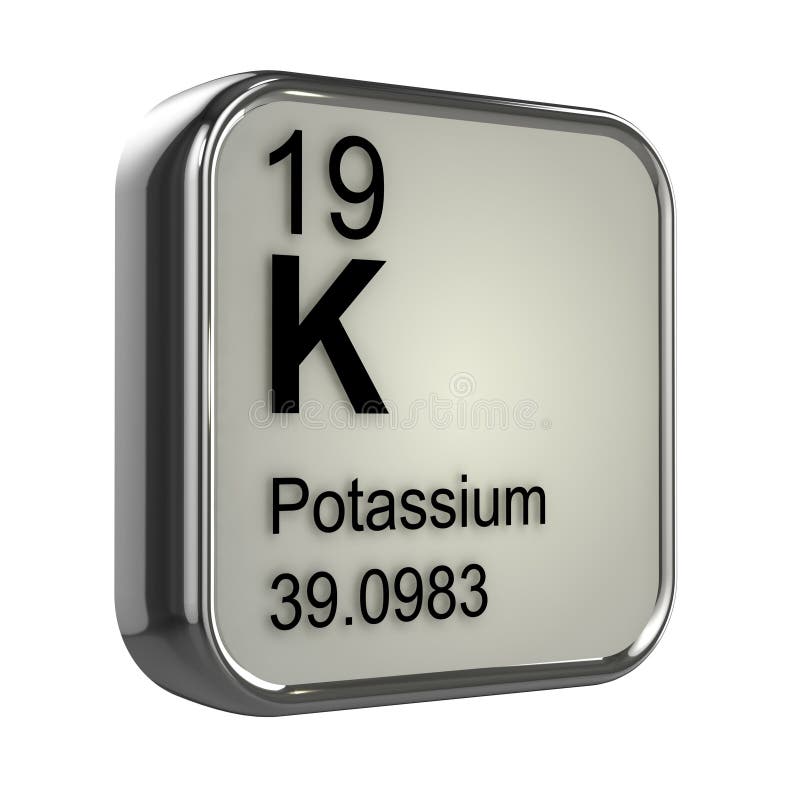Isotopes of potassium available from ISOFLEX
Lana del rey demo. The three naturally occurring isotopes of potassium are 39 K, 40 K and 41 K. 39 K makes up about 93.3% of all naturally occurring potassium, 41 K makes up about 6.7% and the remaining tiny fraction is 40 K. 39 K and 41 K are stable isotopes, but 41 K is actually a radioactive isotope. What is the most abundant isotope of Potassium, which has an average atomic mass of 39.10 amu? Zinc with 37 neutrons.
| Isotope | Z(p) | N(n) | Atomic Mass | Natural Abundance | Enrichment Level | Chemical Form |
| K-39 | 19 | 20 | 38.9637069 | 93.26% | >99.90% | Chloride |
| K-40 | 19 | 21 | 39.9639985 | 0.01% | 5.00-16.95% | Chloride |
| K-41 | 19 | 22 | 40.9618260 | 6.73% | >95.00% | Chloride |
Isotopes of Potassium Potassium is the major intracellular cation and plays a significant role in several physiological processes.103–106 Circulating potassium enters all tissues and has a profound effect on the function of several organs, particularly depolarization and contraction of the heart. Potassium has 26 known isotopes from 31K to 57K, with the exception of still-unknown 32K, as well as an unconfirmed report of 59K.2 Three of those isotopes occur naturally: the two stable forms 39K and 41K, and a very long-lived radioisotope 40K. The element potassium has 3 naturally occurring isotopes, 39K, 40K, and 41K. Of these, only 40K is radioactive. Potassium, in the form of potassium chloride is the main ingredient in salt substitutes sold as a food additive. Potassium-40 is a rare example of an isotope that undergoes three types of decay processes.

Request a Quote
Potassium was discovered in 1807 by Sir Humphry Davy. Its name originates with the English word potash (“pot ashes”) and the Arabic word qali (meaning “alkali”). The origin of the symbol K is the Latin word kalium (“alkali”). Mylabsplus dtcc. It is an essential element needed for plant growth. Potassium deficiency has also been associated with several common animal ailments. It is in extracellular fluid in animals, at lower concentrations than sodium.

A soft, silvery metal, potassium has a body-centered cubic structure that rapidly oxidizes in moist air and imparts a crimson-red color to flame. It is soluble in liquid ammonia, aniline, mercury and sodium. It reacts violently with water and acids, reacts with alcohol, and dissolves in liquid ammonia and mercury. It also reacts with oxygen or air, forming three oxides: potassium monoxide, potassium peroxide and potassium superoxide. Reactions with halogens, fluorine, chlorine and bromine occur with explosive violence. Violent reactions can occur with many metal halides as well.
K 39 Isotope
Potassium products have applications in the bleaching of textiles and straw, in the tanning of leather, and in the food industry — potassium is the main ingredient in baking powder, it improves dough strength and rise height, and it is a preservative in wine- and beer-making. Potassium nitrate is used in gunpowder and fertilizer. Potassium cyanide is used in mining and in organic synthesis. Potassium carbonate is used in glass, soap, fluorescent lamps, textile dyes and pigments. Potassium chlorate is added to matches and explosives. Potassium bromide was formerly used as a sedative and in photography.
Properties of Potassium
| Name | Potassium |
| Symbol | K |
| Atomic number | 19 |
| Atomic weight | 39.098 |
| Standard state | Solid at 298 °K |
| CAS Registry ID | 7440-09-7 |
| Group in periodic table | 1 |
| Group name | Alkali metal |
| Period in periodic table | 4 |
| Block in periodic table | s-block |
| Color | Silvery white |
| Classification | Metallic |
| Melting point | 63.25 °C |
| Boiling point | 760 °C |
| Thermal conductivity | 102.5 W/(m·K) at 298.2 °K |
| Electrical resistivity | 6.1 µΩ·cm at 0 °C |
| Electronegativity | 0.8 |
| Specific heat | 0.75 kJ/kg K |
| Heat of vaporization | 76.9 kJ·mol-1 at 760 °C |
| Heat of fusion | 2.33 kJ·mol-1 |
| Density of liquid | 0.819 g/cm3 at 100 ºC and 0.771 g/cm3 at 300 ºC |
| Density of solid | 0.862 g/cm3 at 20 ºC |
| Electron configuration | [Ar]4s1 |
| Atomic radius | 2.35 Å |
| Oxidation state | +1 |
| Ionization potential | 4.341 eV |
Common Potassium Isotopes
Research

